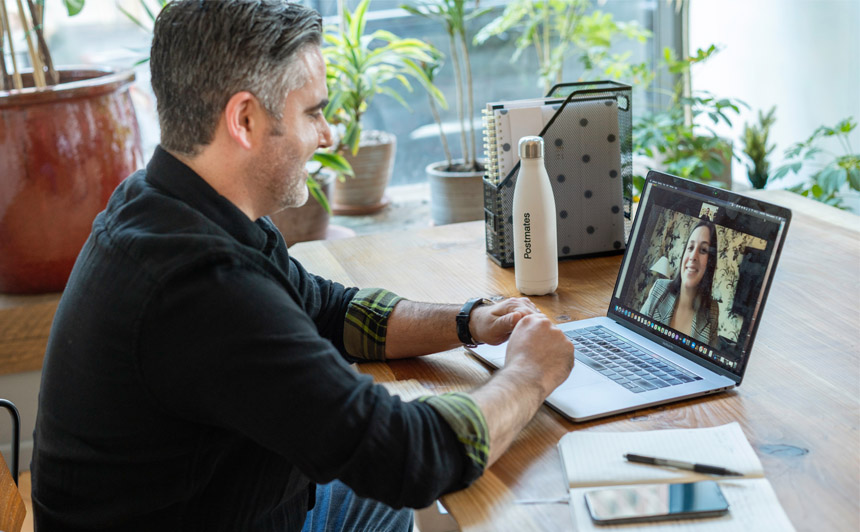Working from home challenges all aspects of practices and behaviours. Leaders would do well to remember and recognise how trust is created, even at a distance.
The recent Edelman Trust Barometer might have shown that as an institution, business is more trusted than governments and the media, but it’s what’s going on inside companies where trust is under particular stress.
The shift away from the natural interactions in the workplace to a distant online-only presence has tested trust between colleagues and challenged leaders to the maximum.
The consequences of a culture of distrust can be dramatic: diminished productivity, innovation and motivation, top talent leaves, customers notice negativity.
There are good reasons why trust has rocketed up the agenda, and for leaders, there are important lessons to be learned.
Starting together
At first, as we all rushed home clutching laptops, we were in it together; all concentrating on figuring out the technology, the connectivity, the home-schooling schedule, and so on. We were all very much going through the same thing, and expected, not unreasonably, that everyone else was similarly preoccupied.
Now, some time on, the situation is different. We have been apart for months and months, living through anxious times alone, and as social animals who naturally take their cues from real-life interaction, the outcomes of that distancing can be negative.
The BBC reports, ‘without in-person interactions to bolster our professional relationships, there’s more room to make negative – often unfounded – assumptions about our colleagues’ behaviours. Too many supervisors haven’t been trained to manage a team remotely, causing them to fall into the trap of over-monitoring employees, which tends to backfire.’
Of course, the culture of a company will decide just how bad (or good) this situation is. But even the best, most inclusive, cultures have been challenged. As always, the senior management set the tone and the expected behaviours.
Creating trust
So, how do you build and create trust? Both personally, and professionally with a lasting and positive impact? How can you be seen as trustworthy?
The final question is a critical one, because no-one can create trust without being trustworthy themselves. Trust is the ultimate two-way street.
HBR put this well when they say, ‘….research shows that the more you trust someone and act accordingly, the more likely they are to trust you in return. Importantly, these do not operate independently. This means that in order to increase trust within your network, you need to shift your focus to signalling your own trustworthiness. Increasing others’ trust in you reduces uncertainty by creating a more stable and certain environment.’
Communication and predictability
As you would imagine, communication is a crucial trust-building tool. Despite the obstacles of working from home, regular two-way communication is essential, especially as the world continues to be so volatile.
Leaving team members alone for too long whilst news headlines bring alarm will never be conducive to creating an atmosphere of trust.
In an ever-changing situation, predictability is very important. That means creating and sticking to routine, turning up when expected, making sure that promises are kept, and, just as importantly, over-promises aren’t made. It also means sticking to the plan and KPIs you create, not throwing in sudden changes unless absolutely necessary.
One trust doesn’t fit all
It is also important to understand that trust doesn’t work for the same for everyone.
It has been observed that there are two main types of trust: competence trust, which relates to pure professional ability; and interpersonal trust, which is based on human connection and integrity. Having one without the other won’t work.
‘Great leaders are those who treat everyone in their organization, from the lowest level to the highest, with respect. Simply being excellent at the professional aspects of your job won’t buy you any trust; demonstrating these valuable leadership traits is what will set you apart.’
Trust is received differently too. HBR describes how ‘trust building, maintenance, and recovery work differently for different types of people, who fall into two broad categories: automatic trusters and evidence-based trusters’.
The automatic truster group will approach and trust others from the off with a ‘default’ level of trust, until that trust is broken. But having given others the benefit of the doubt, they are doubly affected by that betrayal of trust.
Evidence-based trusters start out as natural distrusters until the other party has proven their trustworthiness. Clearly displaying and providing that evidence during remote working can make it significantly more difficult to establish trust.
It’s not always impossible to identify which truster is which, so the general recommendation is that it’s a safe bet to provide more communication and information than ordinarily necessary to a new colleague.
Even when we are back to the ‘new normal’, trust and credibility will never lose its potency to drive a business forward or throw it off course.
Difficult to win, even harder to win back, leaders who have the EQ and experience to be seen as trustworthy and help create a culture of trust, will stand out.
To discuss your experience of trust or how we can find trustworthy leaders for your organization, please don’t hesitate to get in touch.



